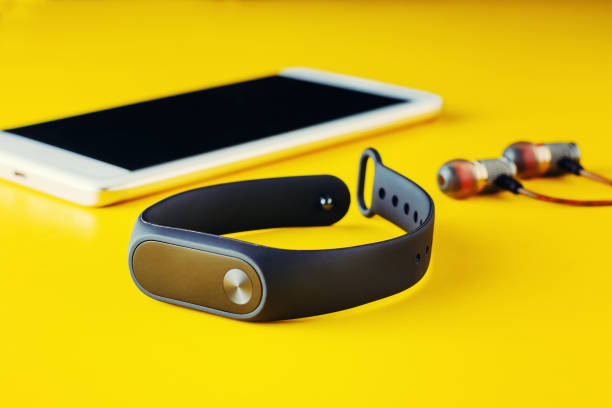Table of Contents
Wearable technology has evolved far beyond its early days as simple fitness trackers. Today’s wearable tech encompasses a broad spectrum of devices that offer advanced functionality, from health monitoring to augmented reality. As these technologies become more sophisticated, they are transforming how we interact with our environment, manage our health, and enhance our daily lives. Here’s a look at the latest advancements in wearable tech and how they’re expanding the boundaries of what these devices can do.

The Evolution of Wearable Tech
The journey of wearable technology began with basic fitness trackers that primarily measured steps and monitored physical activity. These devices were primarily designed to encourage a more active lifestyle by providing users with insights into their daily movement and exercise. However, as technology has advanced, wearables have developed far beyond their initial scope.
Modern wearable tech now includes smartwatches, smart glasses, and even smart clothing, each offering unique capabilities that extend well beyond simple fitness tracking. This evolution reflects a growing desire for devices that integrate seamlessly into our lives, providing real-time information and functionality that was previously unimaginable.
Health Monitoring: Beyond the Basics
One of the most significant advancements in wearable technology is the ability to monitor a wide range of health metrics. Modern wearables are equipped with sensors that can track heart rate, blood oxygen levels, and even sleep patterns. This data can be invaluable for managing chronic conditions, improving overall health, and providing early warnings for potential health issues.
For instance, some wearables now include electrocardiogram (ECG) sensors that can detect irregular heart rhythms, potentially alerting users to conditions such as atrial fibrillation. Additionally, continuous glucose monitors, which can be integrated into wearable tech, offer diabetic patients a non-invasive way to monitor their blood sugar levels throughout the day.
Wearable tech is also advancing in mental health monitoring. Devices that track stress levels, provide guided breathing exercises, and monitor mood swings are becoming more common. These features can help users manage their mental well-being by providing insights into their stress levels and offering strategies to improve mental health.

Augmented Reality and Smart Glasses
Augmented reality (AR) is another area where wearable tech is making significant strides. Smart glasses equipped with AR capabilities overlay digital information onto the physical world, providing users with a seamless blend of real and virtual experiences. This technology has applications in various fields, including gaming, navigation, and even professional training.
For example, AR smart glasses can provide real-time directions while navigating, display notifications without having to look at a phone, and offer interactive experiences in gaming. In professional settings, these glasses can assist with complex tasks by providing hands-free access to instructions and data, thereby improving efficiency and productivity.
The potential of AR smart glasses extends into healthcare as well. Surgeons, for instance, can use these glasses to view patient data and imagery during procedures, enhancing precision and reducing the need for additional equipment.
Smart Clothing: The Next Frontier
Smart clothing is pushing the boundaries of wearable technology even further. Unlike traditional wearables, smart clothing integrates sensors and electronics directly into the fabric, offering a new level of functionality and comfort. These garments can monitor various health metrics, such as heart rate and body temperature, while adapting to the wearer’s needs.
One application of smart clothing is in sports and fitness. Athletic wear can track performance metrics, such as muscle activity and movement patterns, providing athletes with detailed feedback on their training. This data can be used to optimize performance and reduce the risk of injury.
In addition to sports applications, smart clothing is also being developed for everyday use. For example, garments with built-in heating elements can provide warmth in cold weather, while those with moisture-wicking properties can enhance comfort during physical activities.
Integrating Wearables into Daily Life
The integration of wearable tech into daily life involves more than just purchasing devices; it requires adapting to new ways of interacting with technology. For example, using a smartwatch to manage notifications and control other smart devices can streamline daily tasks and improve efficiency.
Wearables also offer new possibilities for personalized experiences. For instance, a smart ring that monitors sleep patterns can provide tailored recommendations for improving sleep quality. Similarly, a wearable device that tracks physical activity can offer customized fitness plans based on individual goals and performance data.
As wearable technology becomes more advanced, it is also becoming more integrated with other aspects of our digital lives. Many devices can sync with smartphones and other gadgets, allowing for a cohesive experience that bridges various technologies. This integration enables users to access and manage data from multiple sources seamlessly, enhancing the overall utility of wearable tech.

Privacy and Security Considerations
As with any technology that collects personal data, privacy and security are important considerations in the world of wearables. Ensuring that personal information is protected and that data is used responsibly is crucial. Many wearable devices store sensitive health and activity data, making it essential to use devices from reputable manufacturers that prioritize security.
Users should also be mindful of the permissions granted to wearable apps and regularly review privacy settings. Encrypting data and using strong, unique passwords for associated accounts can further safeguard personal information.
Looking Ahead
The future of wearable tech is promising, with ongoing advancements in sensors, materials, and connectivity paving the way for even more innovative devices. As technology continues to evolve, wearables will become increasingly integrated into our lives, offering new ways to enhance health, productivity, and overall well-being.
From health monitoring and augmented reality to smart clothing and seamless integration with other devices, wearable tech is expanding its role and capabilities. As these technologies develop, they will not only provide new functionalities but also become more intuitive and accessible, making it easier for individuals to harness their potential and improve their daily lives.
The smart evolution of wearables is a testament to how technology can enhance human capabilities and create a more connected, informed, and efficient world.

